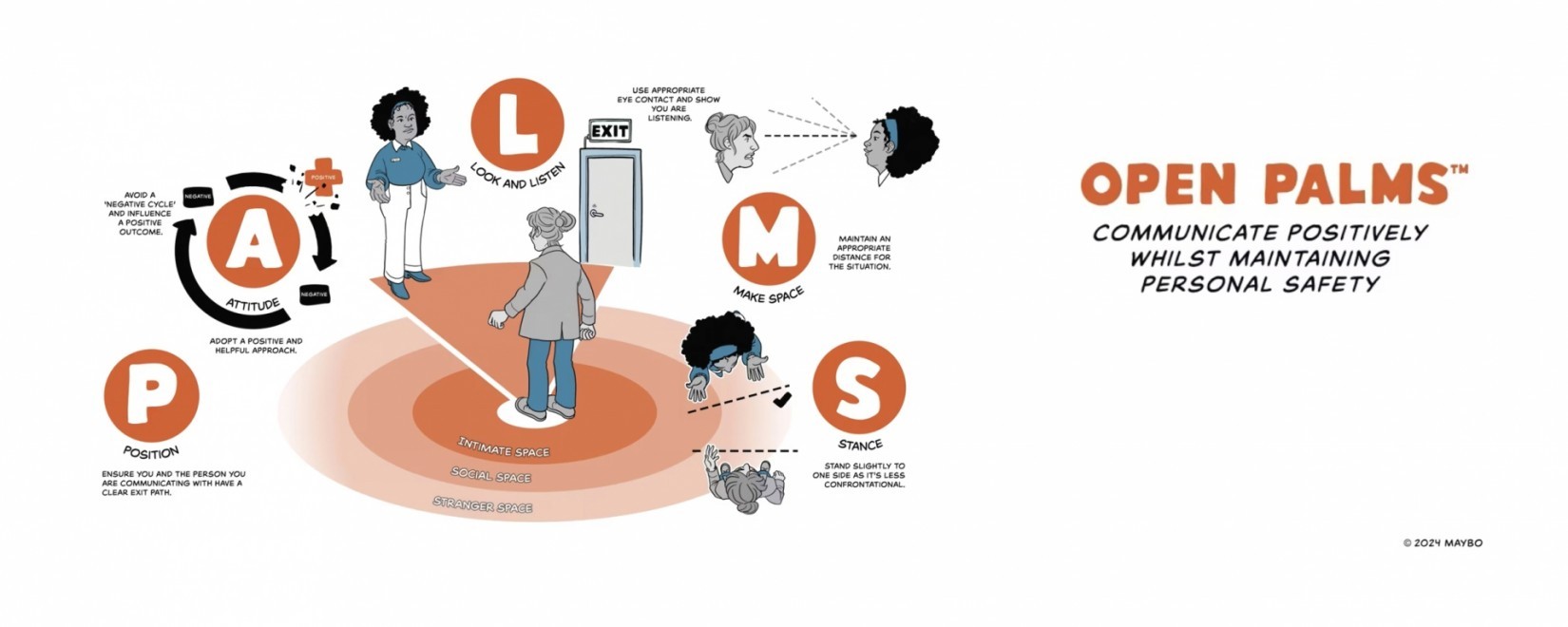Choose another country or region to
see content specific to your location

Maybo’s Open PALMS™ Model helps us communicate positively while maintaining personal safety. Showing open hands with palms facing upwards is generally considered positive and non-threatening.
This short video illustrates how the use of body language and positioning enable you to display non-aggression towards another person:
To request a FREE poster of our SAFER, POPS, SEAL and Open PALMS models, suitable for staff rooms, training rooms, and notice boards, contact us with the link below
If you would like to discuss how we can help you please get in touch with one of our experts today